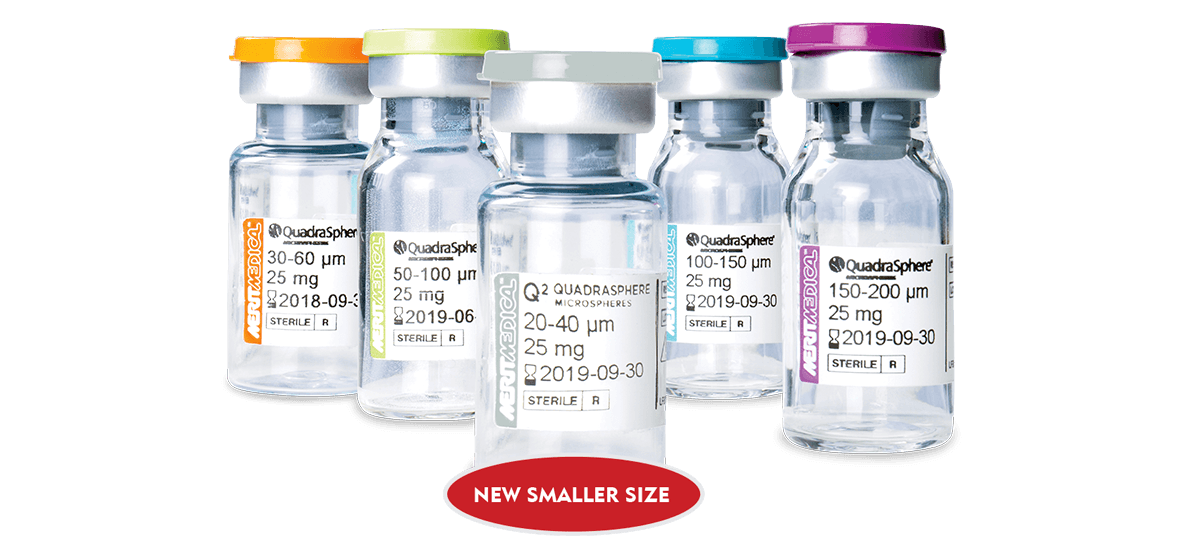• QuadraSphere Microspheres size must be chosen after consideration of the arteriovenous angiographic appearance. QuadraSphere Microspheres size should be selected to prevent passage from any artery to vein.
• Some of the QuadraSphere Microspheres may be slightly outside of the range, so the physician should be sure to carefully select the size of QuadraSphere Microspheres according to the size of the target vessels at the desired level of occlusion in the vasculature and after consideration of the arteriovenous angiographic appearance.
• Because of the significant complications of misembolization, extreme caution should be used for any procedures involving the extracranial circulation encompassing the head and neck, and the physician should carefully weigh the potential benefits of using embolization against the risks and potential complications of the procedure. These complications can include blindness, hearing loss, loss of smell, paralysis, and death.
• Serious radiation induced skin injury may occur to the patient due to long periods of fluoroscopic exposure, large patient, angled x-ray projections and multiple image recording runs or radiographs. Refer to your facility’s clinical protocol to ensure the proper radiation dose is applied for each specific type of procedure performed.
• Onset of radiation injury to the patient may be delayed. Patients should be counselled on potential radiation effects, what to look for and whom to contact if symptoms occur.
• QuadraSphere Microspheres MUST NOT be reconstituted in sterile water for injection. Reconstitution in sterile water results in extensive swelling that renders the injection of QuadraSphere microspheres very difficult or may prevent injection.
• Do not reconstitute QuadraSphere Microspheres with Lipiodol / Ethiodol.
• Pay careful attention for signs of mistargeted embolization. During injection carefully monitor patient vital signs to include SaO2 (e.g. hypoxia, CNS changes). Consider terminating the procedure, investigating for possible shunting, or increasing Microspheres size if any signs of mistargeting occur or patient symptoms develop.
• Consider upsizing the Microspheres if angiographic evidence of embolization does not quickly appear evident during injection of the Microspheres
CONTRAINDICATIONS:
• Patients intolerant to vascular occlusion procedures
• Vascular anatomy or blood flow precluding correct catheter placement or embolic injection
• Presence or suspicion of vasospasm
• Presence or likely onset of hemorrhage
• Presence of severe atheromatous disease
• Feeding arteries too small to accept the selected QuadraSphere Microspheres
• Presence of collateral vessel pathways potentially endangering normal territories during embolization
• High flow arteriovenous shunts or fistulae with luminal diameter greater than the selected size of QuadraSphere Microspheres
• Vascular resistance peripheral to the feeding arteries precluding passage of QuadraSphere Microspheres into the lesion
• Presence of arteries supplying the lesion not large enough to accept QuadraSphere Microspheres
• Do not use in pulmonary vasculature, coronary and central nervous system vasculature
• Known sensitivity to poly vinyl alcohol-co-sodium acrylate



